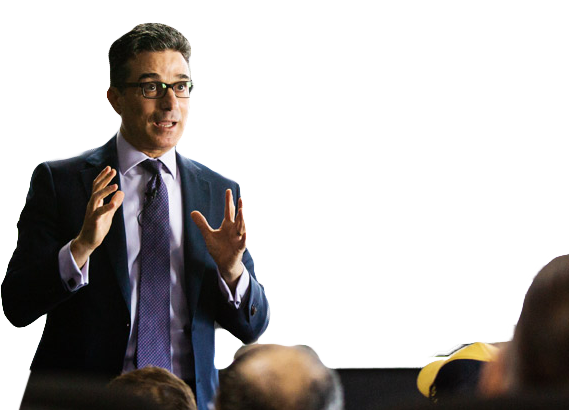Are salespeople good listeners?
As professional salespeople, we are good at listening to our prospects and customers. After all, hearing is one of our five main senses, and we use our ears all the time, don’t we?
Yet research and analysis of 25,537 business-to-business sales conversations by Saleshacker.com show that the average business-to-business salesperson spends between 65–75% of a call talking, leaving only 25–35% of the call for listening.
The same research identified that top-performing salespeople spent only 43% of the call talking, thus leaving 57% of the call for listening.
The approach of “average” salespeople is to an extent reinforced in the quote by Stephen R. Covey. Author of the internationally bestselling business book: The 7 Habits of Highly Effective People® who said:
“Most people do not listen with the intent to understand; they listen with the intent to reply.”
And the author and journalist Ernest Hemingway (1899 – 1961) summed it up when he said:
“I like to listen. I have learned a great deal from listening carefully. Most people never listen.”
My 30+ years of experience as a salesman, sales leader and now a sales coach confirms the truth in both sentiments. Often, when a salesperson goes to meet a prospect armed with a kitbag of products and services. It is all too easy for him or her to fall into one of two modes: Speaking, or waiting to speak. The reality is that the salesperson’s enthusiasm gets the better of them. Caught up in their product or service and with a quota to hit, they proceed to spend most of the time talking about product features and benefits. They forget to ask questions and to listen to what the prospect really needs.
Does this sound familiar?
A little exercise
Think back to a recent conversation with a prospect or client and be truthful with yourself.
When you asked them an important question that was going to help you understand their requirements or move the sales cycle forward, did you close your mouth, open your ears, lean forward, and listen to their response intently? Or were you too busy waiting to speak and framing the next question in your mind? If it was the latter, then I would suggest the following exercise:
For your next meeting with a prospect, ask a question about their requirements and mentally record your approach for review afterwards: After you asked your question, what did you do next? Did your approach to listening fall into one of the following?
- You asked the question and immediately jumped to a conclusion/had a product feature in mind as they started speaking and dropped into “waiting to speak” mode, not concentrating upon what the prospect was saying.
- You listened intently to the prospect but did not fully understand what they meant by their response (or its implications to them or their business). However, you took it on face value and didn’t ask any clarifying questions.
- You were listening intently to the client, leaning forward to show interest, mentally putting yourself in the clients’ shoes; actively thinking of the implications and how you were going to respond to what they were saying. As a result, you checked your understanding with them and followed up with clarifying questions.
If your answer was point number 3, then you are already demonstrating the key components of active listening – truly listening and aligning yourself to the prospect.
In their online Active Listening Guide, Hubspot describes active listening as a four-step process:
- Truly listen to the prospect.
- Feedback on the content and feeling of the prospect’s words [in your own terms].
- Confirm you heard the prospect correctly.
- Ask a relevant follow-up question to further clarify your understanding of their situation.
These four steps are evident in good sales communication and are evident in the 3rd approach mentioned above.
You can show that you are listening by sitting forward and looking at the prospect whilst they are talking. This is a signal that you are interested in what they have to say and are actively engaged. You can use gestures such as an occasional nod, or a smile, or other facial expressions at a particular point, or as an encouragement to keep them talking.
Bear in mind that the role of a good listener is to understand and interpret what is being said. As such you should reflect on the prospect’s tone of voice, as well as the words they use. You can feedback the content and feeling by paraphrasing. “If I understand you correctly, you are saying…,” and “What I’m hearing is…”.
These reflections back to the prospect not only demonstrate that you are a good listener, but they also provide an opportunity to understand more by leading to clarification questions, such as:
- “You mentioned you thought you could achieve a financial saving. Can you put a figure on that? Or,
- “What did you mean when you mentioned this…?”
- “What are the consequences to your business if you don’t change anything?”
As you can see, you can begin to lead and direct the conversation to learn more about what is keeping the prospect awake at night, and the implications thereof. Not only are such insights great to replay during the meeting, but they are also invaluable for playing back in the management summary of a follow-up proposal.
If you would like to learn more about how to use active listening skills to identify client needs, I can highly recommend the Systematic Selling Strategies course by The Academy For Sales Excellence.




